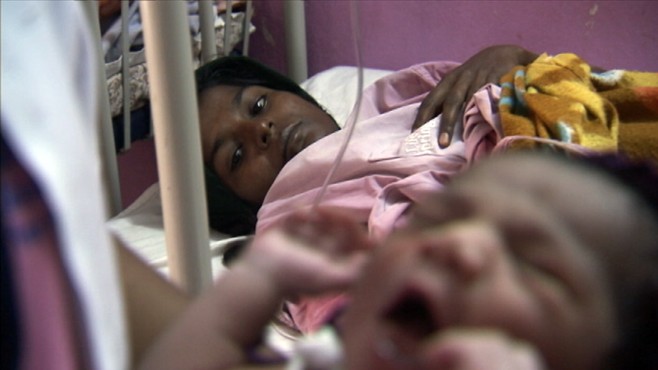A recent report indicates that despite the best healthcare services, mothers from marginalised sections of society receive very little attention.
 by Humra Quraishi
by Humra Quraishi
Earlier this month, the Population Foundation of India, an NGO working in the field of heath and population, organised a consultation on Maternal Health on April 3 and 4, 2013 with support from the United Nations Population Fund, the Woodrow Wilson International Center for Scholars, and the Maternal Health Taskforce of the Harvard School of Public Health.
I quote Poonam Mutterja, the executive director of the Population Foundation of India on the current scenario: “We all know that maternal mortality has declined significantly over the last decade. InIndia, the figures dropped from 301 per 100,000 births in 2003 to 212 in 2009. Yet, these reductions have not reached the most marginalised and disadvantaged communities and groups in society; tribal communities, schedule castes, and those belonging to the poorest quintile.”
According to the National Family Health Survey 2005-2006, scheduled tribe mothers are least likely to have received any antenatal care or care from a doctor. Moreover, only 23 per cent of mothers in the lowest wealth quintile received antenatal care from a doctor as against 86 per cent of mothers in the highest wealth quintile.
Mutterja continues, “I refer to the case of the 26 maternal deaths that took place at Barwani district hospital in Madhya Pradesh over a period of eight months in 2010. 21 of these 26 women belonged to scheduled tribes. The Population Foundation of India, which is the secretariat for community monitoring conducted an enquiry at the government’s request, and found that each of the 26 maternal deaths was avoidable.”
The Foundation has also released some more findings on maternal health:
– India’s current MMR (Maternal Mortality Rate) levels still remain unacceptably high and by many estimates account for nearly one-quarter of all such deaths worldwide. Expressed in sheer numbers between 78,000-100,000 women die annually in India as a result of childbirth and pregnancy.
– Moreover, for each woman who dies, another estimated 20 more suffer from infection, injury and disability connected to pregnancy and childbirth.
– Only 50 per cent of women in India receive three or more antenatal check-ups, leaving the other half deprived of adequate care (DLHS-3, 2007-08). The situation is worse when we look at data by caste/tribe.
– The likelihood of having received any antenatal care and care from a doctor is lowest for scheduled tribe mothers (25 per cent) and highest for mothers who do not belong to a scheduled caste, scheduled tribe, or other backward class.
– Among mothers in households with the lowest wealth quintile, 59 per cent received antenatal care and only 23 per cent received antenatal care from a doctor. By contrast, among mothers in households in the highest wealth quintile, 97 per cent received antenatal care and 86 per cent received antenatal care from doctors.
– In India, the unmet need for contraceptives remains high, it is over 30 per cent in Bihar, Jharkhand and Uttar Pradesh, and over 20 per cent in Orissa and Uttarakhand. This unmet need reflects the gap between a woman’s desired fertility and her access to family planning services.
Humra Quraishi is a senior political journalist based in Gurgaon. She is the author of Kashmir: The Untold Story and co-author of Simply Khushwant.
(Picture courtesy abcnews.go.com)
